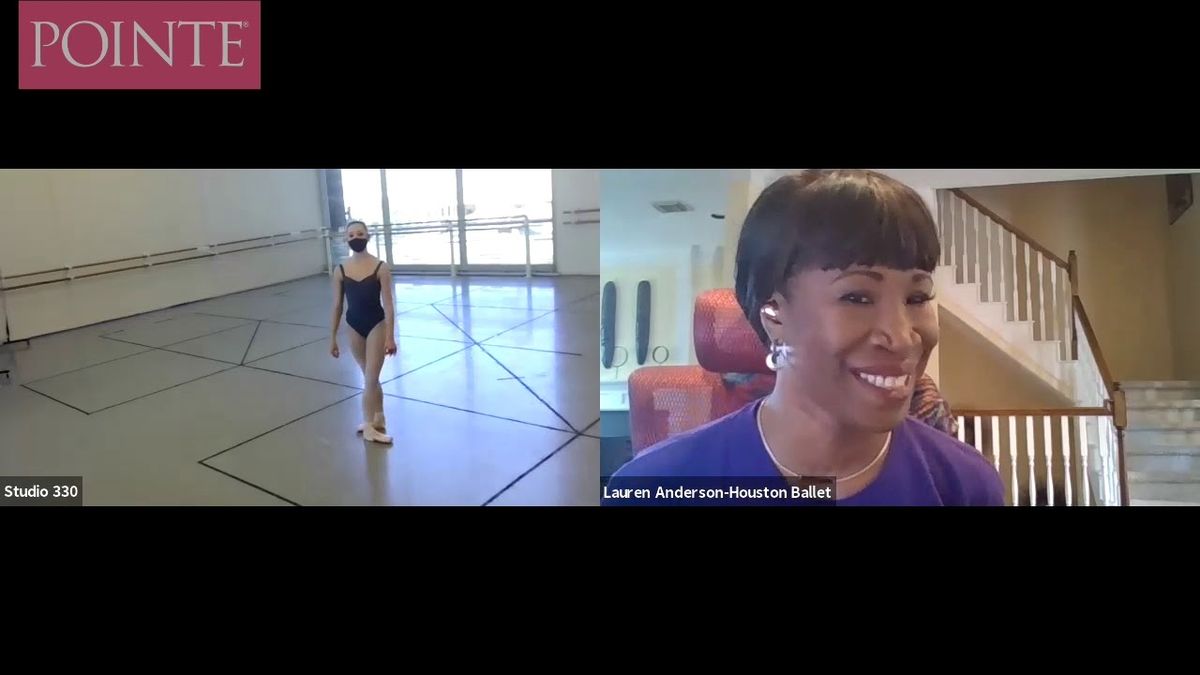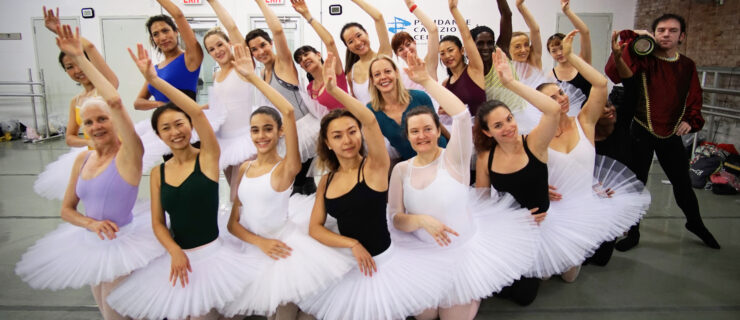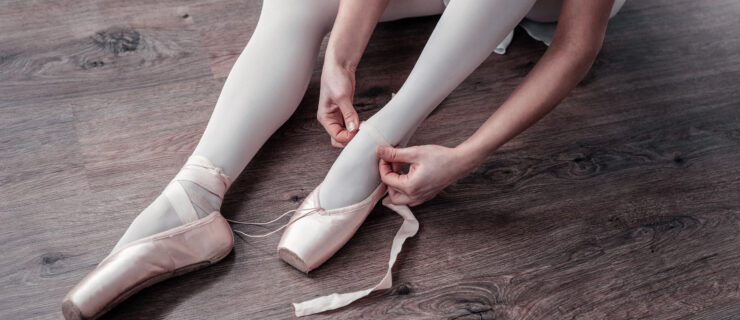Lauren Anderson's Tips for Relevé Développé Écarté Devant
Développé écarté relevé “is in every class, every ballet,” says Lauren Anderson, former principal dancer and current program manager of education and community engagement at Houston Ballet. Below, she gives you the keys to success for this “light and lovely” repertoire staple.
 Houston Ballet principal Karina González, partnered by Chun Wai Chan, does relevé développé écarté devant in Justin Peck’s Reflections. Amitava Sarkar, Courtesy Houston Ballet
Houston Ballet principal Karina González, partnered by Chun Wai Chan, does relevé développé écarté devant in Justin Peck’s Reflections. Amitava Sarkar, Courtesy Houston Ballet
First Steps
Before you do anything else, shift your weight onto the standing leg. “Then it starts with a coupé,” says Lauren Anderson. She begins building the développé at the barre, with an exercise that repeatedly goes to coupé and back to fifth, then progresses up to retiré and returns, then through coupé and passé to attitude in second, and finally to a full extension. Each passed-through position is important, she says: “It’s not coupé, whack!”
Failing to shift the weight in advance causes a host of problems, says Anderson. “You get to retiré and raise the hip. Then you shift your weight, lift the hip again, and now your butt is out in the développé.” To avoid falling, dancers are forced to grip their working thighs and hips, which can lead to hip-flexor tendinitis.
The Back Shapes the Arms
“The back of your body makes the front of your body look good,” Anderson says. Feel the port de bras grow from the base of your spine. As your back takes the arm up, turn your chin toward the fold in your arm, and look up at your hand. The side arm, she specifies, should be in second position. Any tilt of the line must be shaped by the back, not by dropping that arm.
Tip: Anderson has students do a simple experiment in pairs to help them find and activate their back muscles. Facing each other, standing tall in sixth position, they each extend an arm as if to shake hands. Then they gently press their hands together to feel the muscles fire in their backs. There’s a nice little bonus: “When you activate your back, your shoulders can’t go up. Your muscles act like a swing tack from your shoulder blades to that top rib.”
No partner? No problem. In the video below, Anderson shares another back-activating exercise that you can do on your own.
“Tell the Truth”
Looseness in the working hip is imperative for the leg to go up. But lifting the hip to cheat your leg higher actively impedes improvement. Instead, keep the working hip close and present the back of your heel as you draw the foot up into développé. Lift your standing kneecap to activate the back of that leg and engage your “second booty,” which Anderson describes as the place where the glutes and the back of the thigh connect. “Then—boom-shacka-lacka!—the développé becomes free. And there’s hope, because now you have something to work from.”
Tip: In her own extension struggles, Anderson found a floor exercise from the Graham modern technique particularly helpful. “Sit up really tall in the butterfly position with your feet in demi-pointe and your heels lifted. Trying to keep your little toes on the floor, slide your feet forward [until your legs are straight], flex and point, then come back.” She credits this exercise with activating her turnout and connection to the backs of her legs. (Click here for a video demonstration.)
Add the Relevé
If you are executing a développé relevé from fifth, the relevé should happen simultaneously with the scoop to coupé. Most of the time, though, relevé écarté comes from fondu. In that case, relevé as the foot moves up through passé. Either way, Anderson is clear that the toes of the standing foot should move underneath you as you spring onto pointe. It’s not incorrect to take the body over to where the toes are (Anderson calls this a “risevé”), but “then you have to be ready for a serious shift of weight.”





